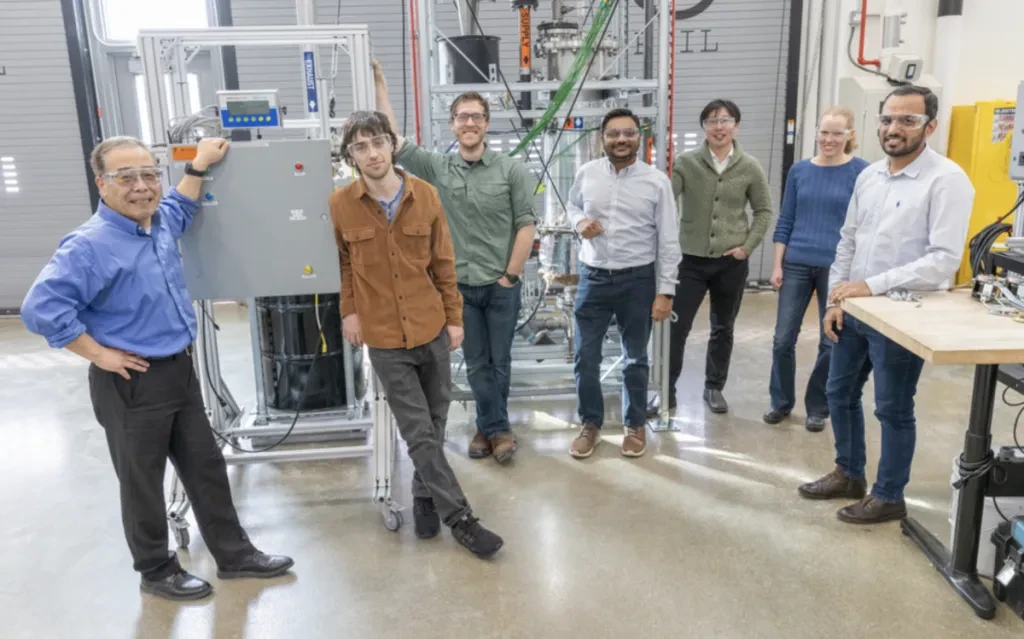The US Department of Energy is funding a pilot project to demonstrate the commercial viability of storing energy in heated sand, which is capable of producing 135 MW of power for five days.

Researchers at the US Department of Energy’s National Renewable Energy Laboratory (NREL) have developed a prototype for a multi-day energy storage system using heated sand, setting the stage for a pilot demonstration project.
The sand used in the thermal energy storage (TES) system could be heated to the range of 1,100 C using low-cost renewable power. The nearby diagram shows that when electricity is needed, the system will feed hot sand by gravity into a heat exchanger, which heats a working fluid, which drives a combined-cycle generator.
The NREL team’s computer modeling has shown that a commercial-scale system would retain more than 95% of its heat for at least five days, the national laboratory said in a press release.
The US Department of Energy will provide $4 million to fund a pilot demonstration project sized with a 100 kW discharge capacity and a 10-hour duration, with groundbreaking set for next year at NREL’s Flatiron campus outside Boulder, Colorado. The pilot project is intended to show the technology’s commercial potential.
At commercial scale, when the sand is fully heated and stored in five silos, the technology could produce 135 MW of power for five days,according to an NREL report.
A targeted levelized cost of storage of 5¢/kWh could be achieved under a variety of scenarios, the report said.
NREL said a technology-to-market transition plan has been developed for the TES system, but was not included in the publicly available report “due to the business sensitivity of NREL and partners.”
Babcock & Wilcox, one of five project team members supporting NREL’s research, said in 2021 that it had signed an agreement with NREL, which gave it “field-limited exclusive rights” to negotiate a licensing agreement that would allow it to market the technology.
Several other energy storage technologies have storage durations longer than the typical four-hour limit for battery storage. For example, Hydrostor is developing a 500 MW/4,000 MWh compressed air energy storage project in California. A pumped storage project under development in Montana would have a capacity of 400 MW and an estimated annual energy generation of 1,300 GWh. And flow batteries have a global market estimated by a research firm at $289 million in 2023.
For seasonal energy storage, hydrogen storage in salt caverns is an option. A project in Utah is expected to have a storage capacity of 150 GWh matched with an 840 MW hydrogen-capable gas turbine combined cycle power plant.
This content is protected by copyright and may not be reused. If you want to cooperate with us and would like to reuse some of our content, please contact: editors@pv-magazine.com.
Source from pv magazine
Disclaimer: The information set forth above is provided by pv-magazine.com independently of Chovm.com. Chovm.com makes no representation and warranties as to the quality and reliability of the seller and products.




